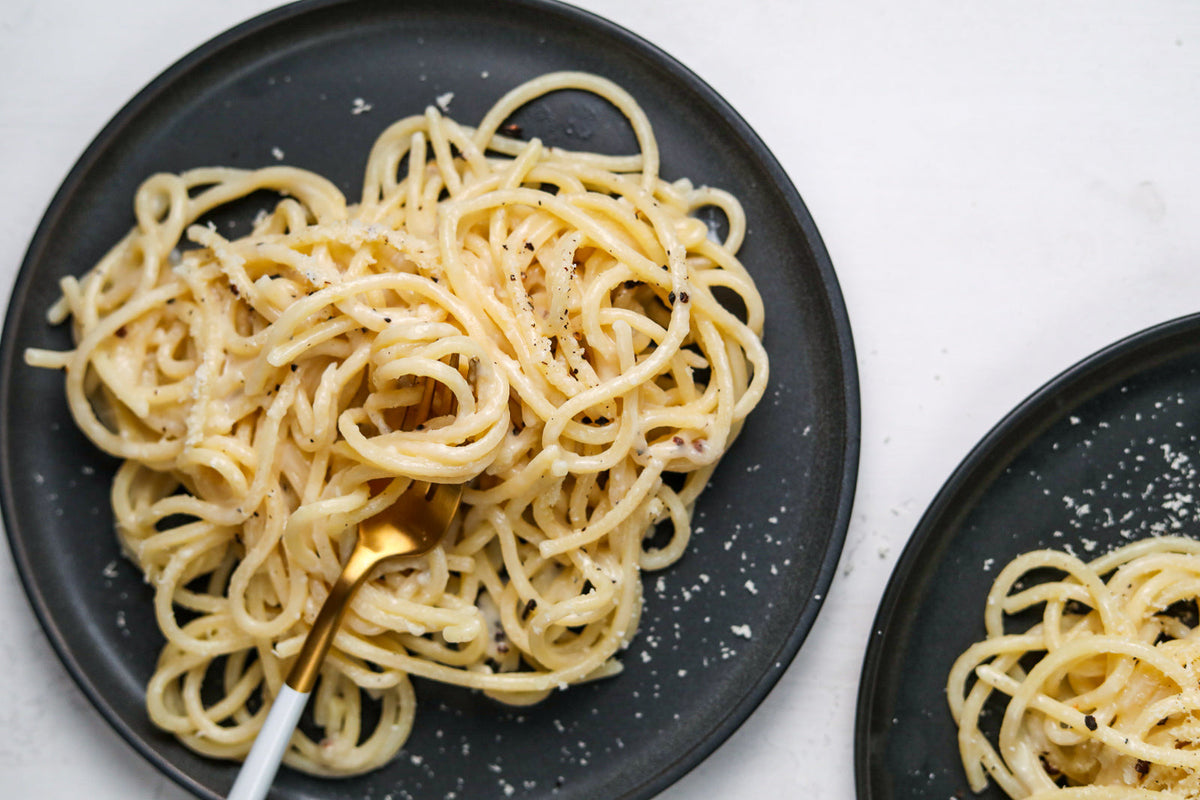
How to Make Perfect Cacio e Pepe
|
|
Time to read 3 min
|
|
Time to read 3 min
Cacio e pepe is one of those dishes that is simple and yet kind of hard to get right. The first few times I made it at home it never really came out right. I was utterly dumbfounded by the fact that I, a person who considers herself a pretty good home cook, could mess up a pasta dish that has just three ingredients: pasta, pecorino romano, and black pepper.
But as time went on, I persevered and continued to make it. I learned that it’s all about the minute details and how you handle each ingredient.
Traditionally, spaghetti or tonnarelli, a square spaghetti (the Roman version of Abruzzo’s spaghetti alla chitarra) are used but I say use whatever you prefer. Thick bucatini and rigatoni are some of my favorite substitutions. For the best starchiness (an important factor when considering the sauce), I recommend a bronze-extruded pasta, which will release more starch into the water, giving your sauce a thicker, more viscous consistency.
Some of the brands I love are Pasta Gentile , Seggiano , and Faella.
Cacio (pronounced kah-cho) is just another way of saying cheese. Although formaggio is the modern Italian word for cheese, cacio is another variation, rooted in Latin. As you can guess, the cacio, in this case, is Pecorino Romano, an aged, salty sheep’s milk cheese.
What I learned through the years is that Pecorino is temperamental. In order to coax it into a luscious creamy sauce, one must not expose it to too much heat nor let it cool off too fast. There are a couple of things you can do to help get it ready for its saucy phase: make sure it’s grated as finely as possible and is at room temperature before you begin. Both of these steps can help ease the cheese into melting.
Want a little less of that salty effect? Replace half the Pecorino with grated Parmigiano or Grana Padano, both of which will balance out the saltiness while adding in a slightly sweet and nutty flavor.
The pepe, or black pepper, should be freshly and coarsely ground. Grinding it fresh releases more of the pepper effect, while the coarse grind provides a crunchy bite. I also recommend toasting it beforehand: simply add it to a bare pan and toast on low heat for a few minutes, just until fragrant.

0 minutes
10 minutes
4
1 pound spaghetti or tonnarelli
2 cups Pecorino Romano cheese (preferably 6 months aged), very finely grated and at room temperature
2 teaspoons black pepper, freshly and coarsely ground (plus more to taste at the end)
¼ cup cold water
Kosher salt, q.b. (as much as needed)
Bring a large pot of water to a boil. Add a palmful of salt (but not too much, remember that the Pecorino is very salty) and then add in the pasta.
Meanwhile, toast the coarsely ground black pepper in a pan on low heat, just until fragrant. Remove from heat.
In a medium-sized bowl, use a fork or a whisk to mix together toasted black pepper, pecorino romano, and cold water to form a thick paste.
Once the pasta is a few minutes to being done, remove it with a slotted spoon and add it to a deep and wide pan, removed from heat. Using a ladle, spoon out about ½ cup of the hot pasta water into a cup and set aside to cool for a minute or two.
Add the pecorino paste to the pasta and stir together. Place on low heat, and slowly add in about ¼ cup of the hot pasta water. Vigorously stir together while on low heat, until a thick and creamy sauce forms. If the sauce seems dry, you can add in a little more of the pasta water.
Serve on warm plates and top with extra grated Pecorino and ground black pepper.